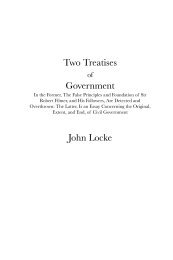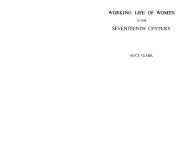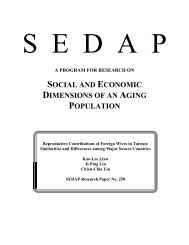Survey Results of the New Health Care Worker Study: Implications ...
Survey Results of the New Health Care Worker Study: Implications ...
Survey Results of the New Health Care Worker Study: Implications ...
- No tags were found...
Create successful ePaper yourself
Turn your PDF publications into a flip-book with our unique Google optimized e-Paper software.
143. Demographic Characteristics <strong>of</strong> <strong>Survey</strong> RespondentsIn total, 1396 nurses from Hamilton <strong>Health</strong> Sciences, Kingston General Hospital, and St.Michael’s Hospital in Toronto responded to our survey. In terms <strong>of</strong> pr<strong>of</strong>essional qualifications,<strong>of</strong> <strong>the</strong>se individuals, <strong>the</strong> majority are Registered Nurses (RNs) and a smaller number areRegistered Practical Nurses (RPNs). In terms <strong>of</strong> educational background, <strong>the</strong> vast majority <strong>of</strong>survey respondents (755 nurses or 54%) reported a diploma in nursing as <strong>the</strong>ir highest level <strong>of</strong>education. About one in five have a university degree in nursing. Additional information about<strong>the</strong> educational background <strong>of</strong> survey participants is contained in Table 1.When asked about <strong>the</strong>ir primary nursing position in <strong>the</strong> hospital, most <strong>of</strong> <strong>the</strong> surveyrespondents reported that <strong>the</strong>y are employed as staff RNs or RPNs. The most common areas <strong>of</strong>practice among survey respondents are critical care, medical surgical care, and nursingeducation. The majority <strong>of</strong> <strong>the</strong> nurses in this sample responded that <strong>the</strong>ir primary area <strong>of</strong>practice is <strong>the</strong> area <strong>the</strong>y would prefer to work in. Additional information about employmentstatus <strong>of</strong> <strong>the</strong> sample is contained in Tables 2 and 3.The survey respondents report an average <strong>of</strong> 18 years <strong>of</strong> tenure in <strong>the</strong> pr<strong>of</strong>ession <strong>of</strong>nursing, an average <strong>of</strong> 13 years <strong>of</strong> employment at <strong>the</strong>ir hospital workplace, and an average <strong>of</strong> 8years in <strong>the</strong>ir current position. The average age <strong>of</strong> <strong>the</strong> sample is 42 years. Our sample reflects<strong>the</strong> dominance <strong>of</strong> women workers in <strong>the</strong> nursing pr<strong>of</strong>ession. Given this high percentage <strong>of</strong>female workers, it is not surprising that 17% <strong>of</strong> our respondents have children living with <strong>the</strong>mwho are less than 5 years <strong>of</strong> age, 26% with children between <strong>the</strong> ages <strong>of</strong> 5 and 12 years, and 31%with children13 years <strong>of</strong> age or older. Only a small number <strong>of</strong> respondents live with ano<strong>the</strong>rdependent adult. Almost all reported that <strong>the</strong>y do not live alone, and are married or live with apartner [See Table 4].








